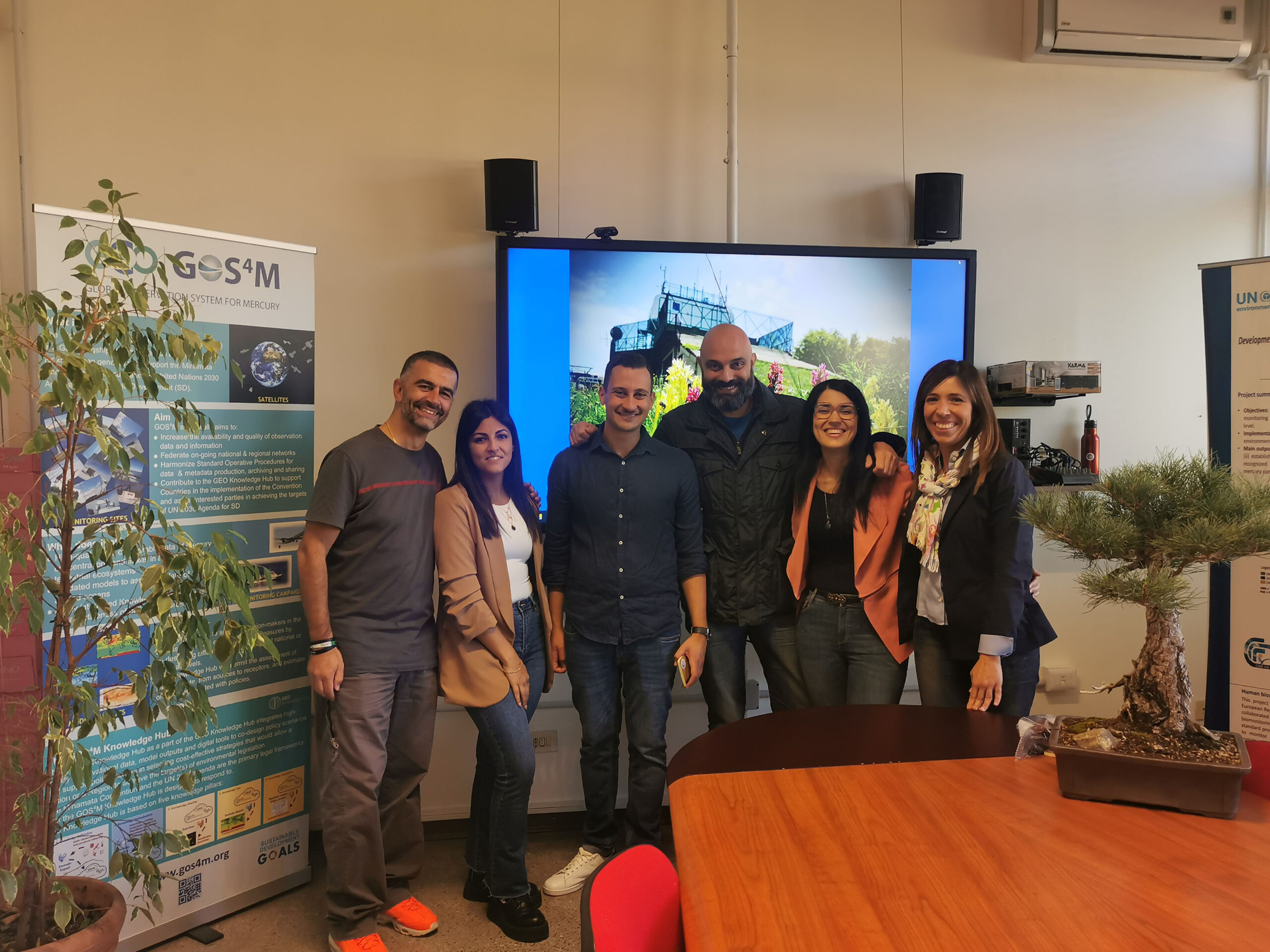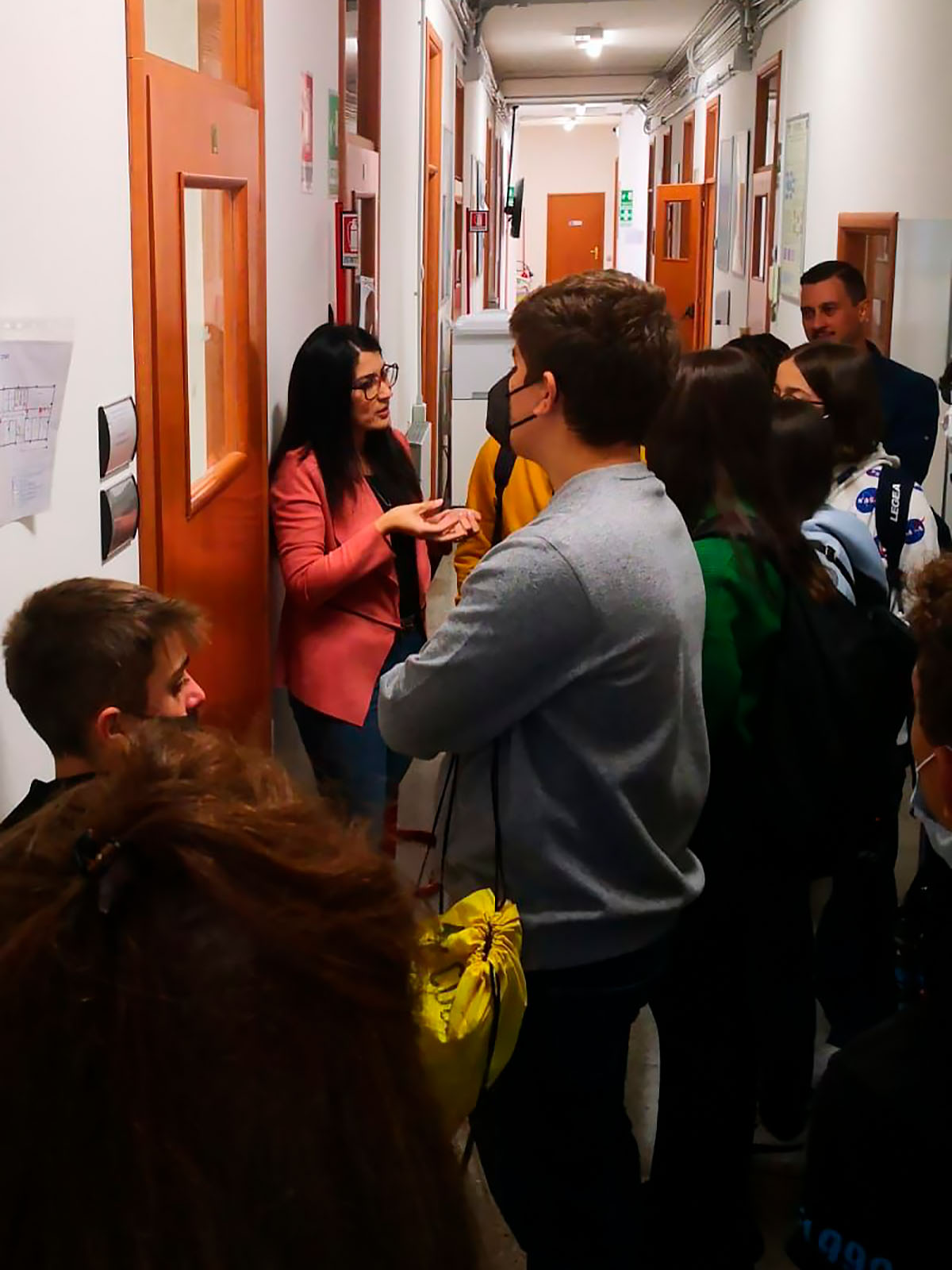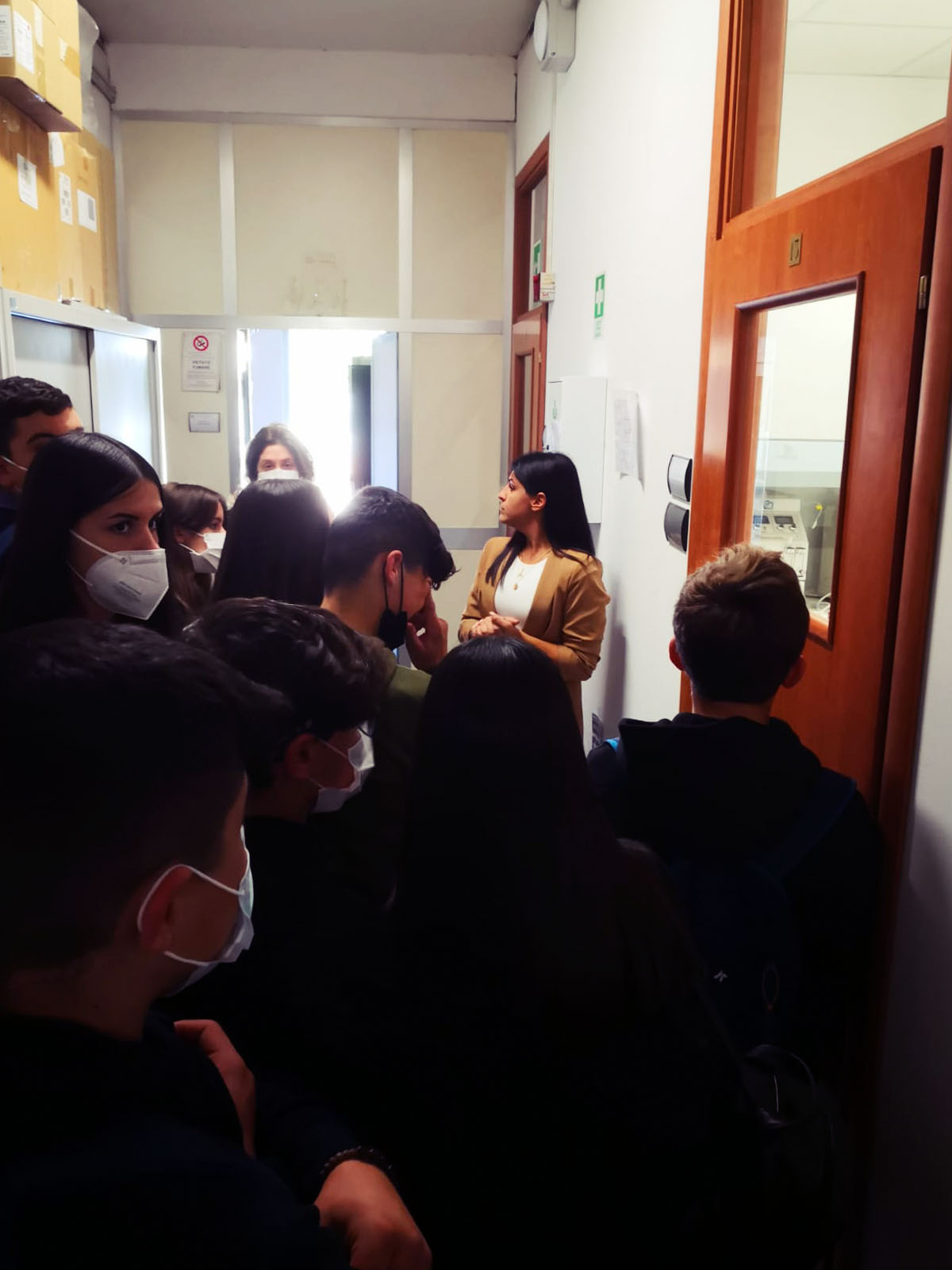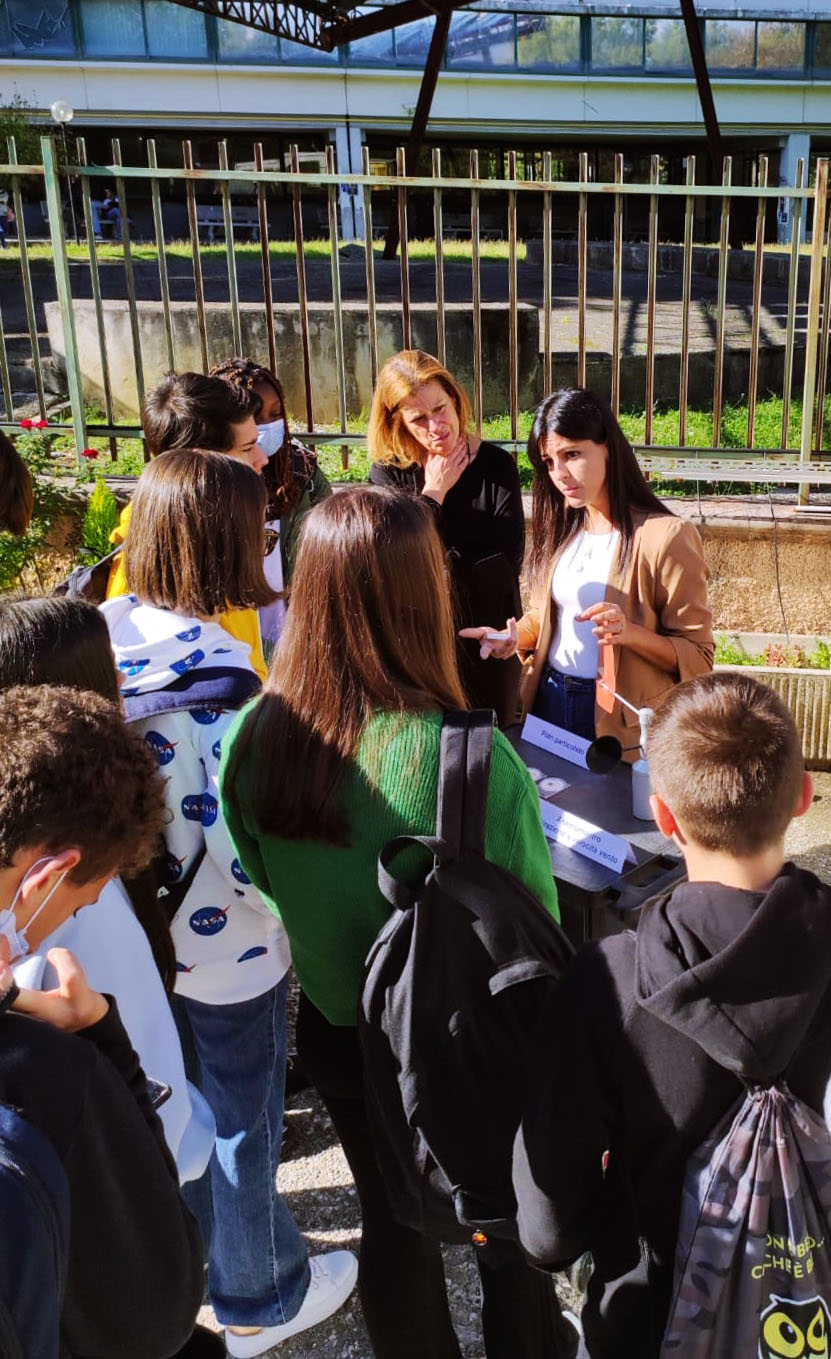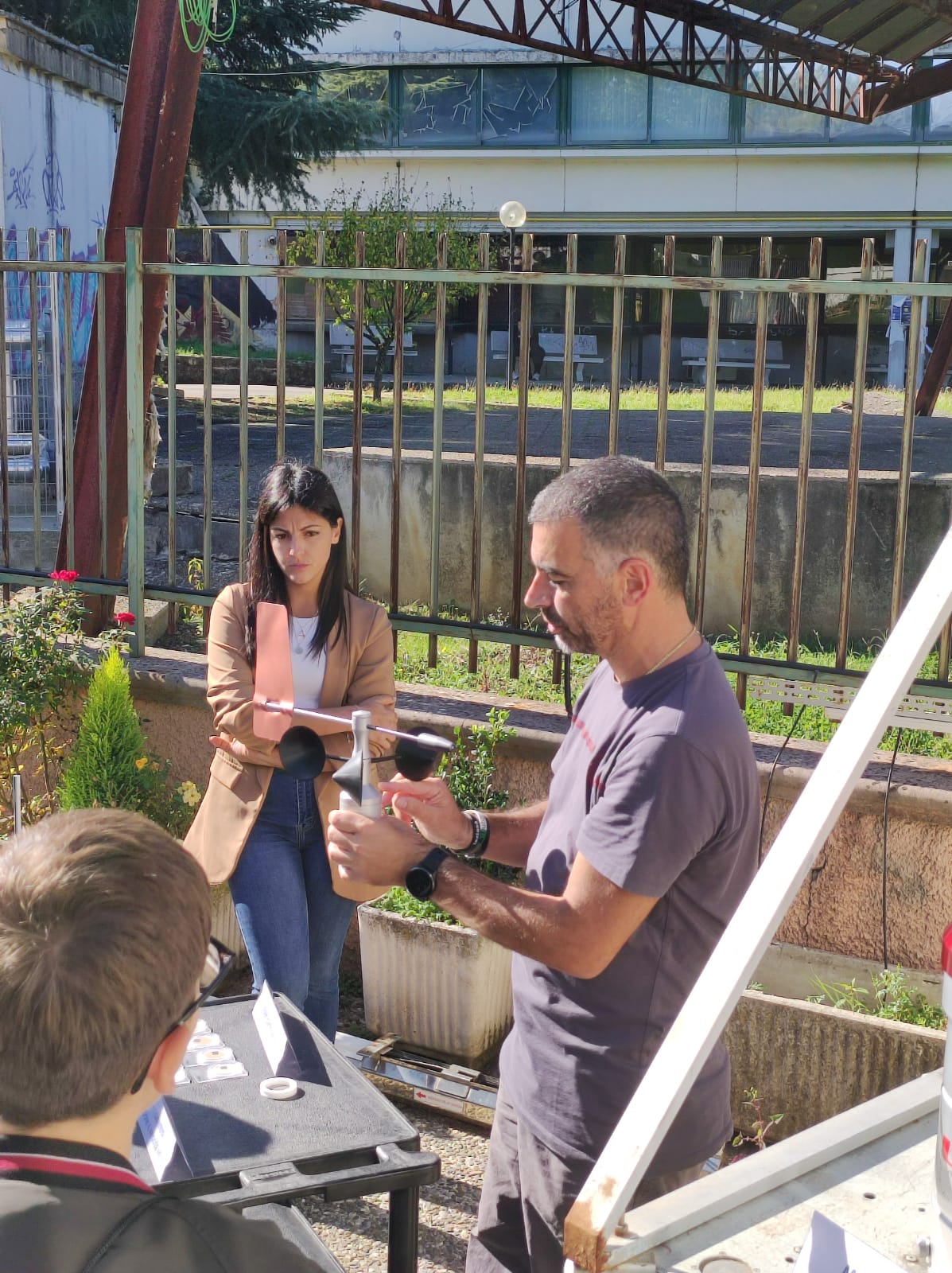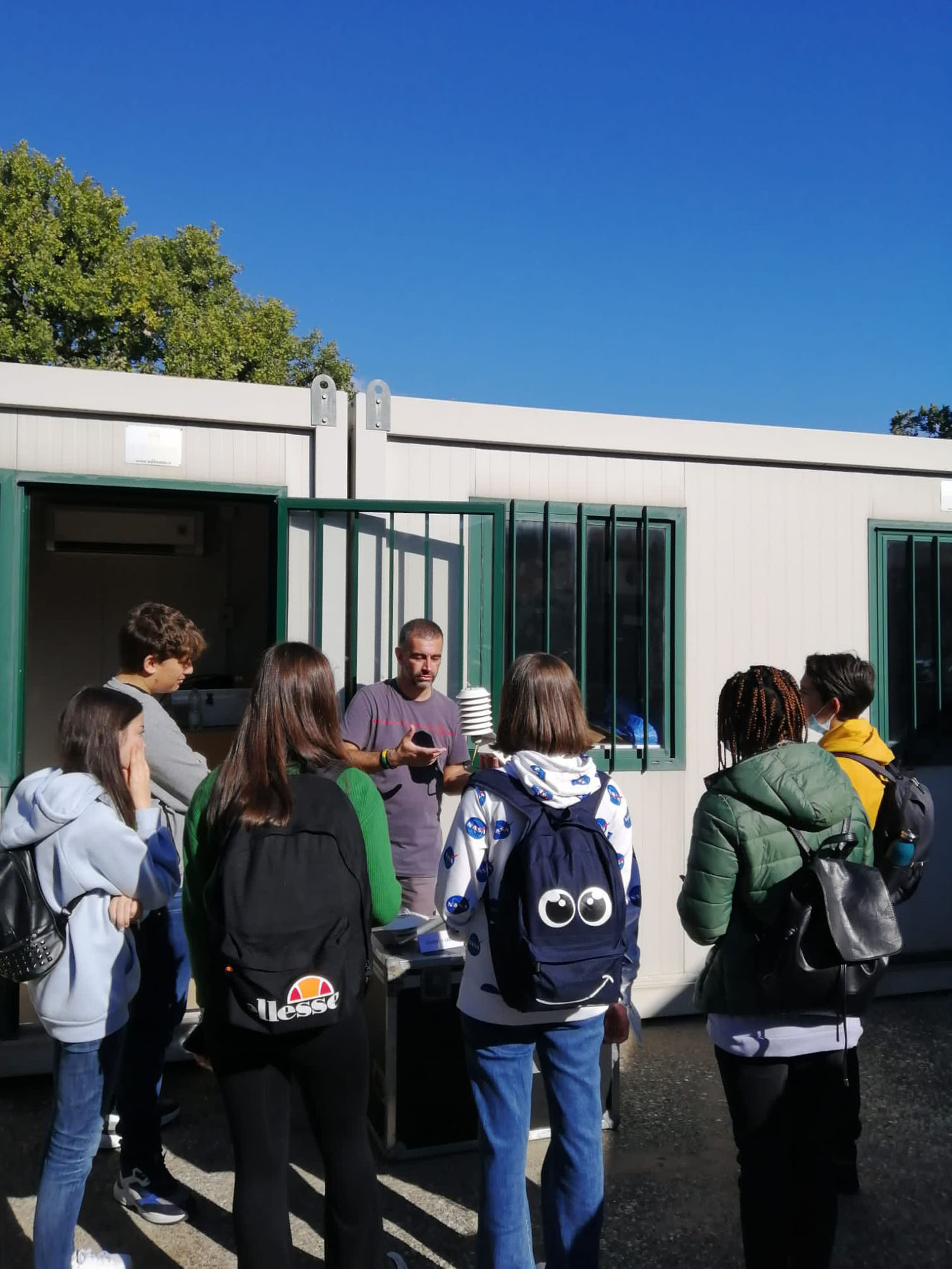Browse the gallery 👇
Air pollution and climate change through observational networks, human biomonitoring, instrumentation and laboratory analysis to support atmospheric and climate science
The scientific dissemination activity held at the Rende branch of the CNR-IIA was aimed at the first classes of the "Marconi-Guarasci" Institute of Higher Education in Rogliano, accompanied by their teachers.
The dissemination path was divided into various moments of in-depth analysis, aimed at making known the interdisciplinary aspects that link the science of the atmosphere, climate and human biomonitoring.
Through the projection of a video, the students took part in a virtual tour which led them to fly over the Sila Grande plateau – where the Monte Curcio Atmospheric Observatory (MCU) is located – and to view the instrumental park of with which this Research Infrastructure is equipped. The scientific and regulatory context in which the atmospheric observation networks operate was presented and the trend of the available measurements - from 2015 to today - taken at the MCU observatory was discussed.
Walking through the laboratories of the Rende site, the students were shown the instruments for measuring some physical-chemical variables of the atmosphere: weather sensors (radiometer, anemometer and thermo-hygrometer), CO analyzer2, particulate matter sampler (PM10 and PM2.5). The students also had the opportunity to closely observe the atmospheric particulate samples collected at MCU, as well as the laboratory instrumentation useful for their analytical characterization.
Given the direct involvement of the CNR-IIA in the context of the Minamata International Convention, particular attention was paid to the mercury theme, showing the active and passive measurement techniques for atmospheric mercury and the analytical techniques for mercury determination in the various environmental and biological matrices.
Particular interest aroused the in-depth study – edited by Rende researchers who are experts in clinical pathology – dedicated to the impact on human health of exposure to atmospheric pollutants, which was also accompanied by curiosities and historical references linked to the mad hatter syndrome.
The dissemination process was also enriched by smartphone participation in the online quiz "QuizzAria - How well we know the air we breathe”, which fostered the interaction and active involvement of the students as well as facilitating the introduction to the various topics explored during the visit.
ORGANIZATION: Mariantonia Bencardino, Carmine Ungaro, Teresa Sprovieri, Virginia Andreoli, Antonella Tassone, Maria Martino, Domenico Amico, Valentino Mannarino, Gianluca Bevacqua.
Browse the gallery ????

